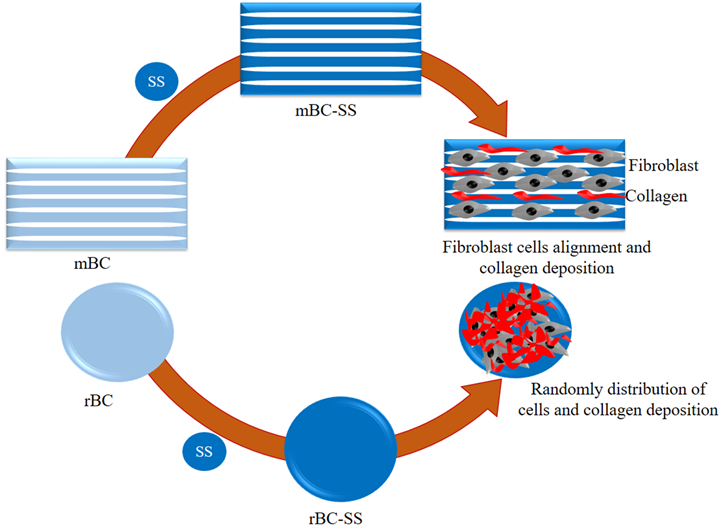 Combining silk sericin and surface micropatterns in bacterial cellulose dressings to control fibrosis and enhance wound healing
Combining silk sericin and surface micropatterns in bacterial cellulose dressings to control fibrosis and enhance wound healing
Biaou O. Ode Boni, Lallepak Lamboni*, Bianza M. Bakadia, Saied A. Hussein, Guang Yang*
Bacterial cellulose (BC) is an advantageous wound healing matrix widely utilized in dressings thanks to its interesting physical properties. Lacking bioactivity, BC has been subject to modifications for improving its biological properties. It has been modified with silk sericin (SS) mainly for its antioxidant and mitogenic effects, yielding enhanced wound healing abilities. Besides, patterned BC exhibited anti-scar behavior, inhibiting the growth of skin fibroblasts. Incorporating surface microgrooves together with SS in BC, the current study proposes dressings that would improve healing, reduce healing time, and still achieve reduced fibrosis, by controlling collagen deposition and inducing profitable microgroove-oriented architecture. In vitro experiments demonstrated enhanced proliferation of both fibroblast and epithelial cells with alignment on the microstructured composite samples relatively to the unmodified controls. Compared to the unmodified control where collagen synthesis was rapid and reached the peak value in a relatively short time, on the microstructured surface a progressive and more contained profile was observed. Thus, the structured composite dressings would accelerate healing due to improved cell growth, while preventing the anarchic deposition of collagen responsible for fibrosis and scar formation through cell orientation.
